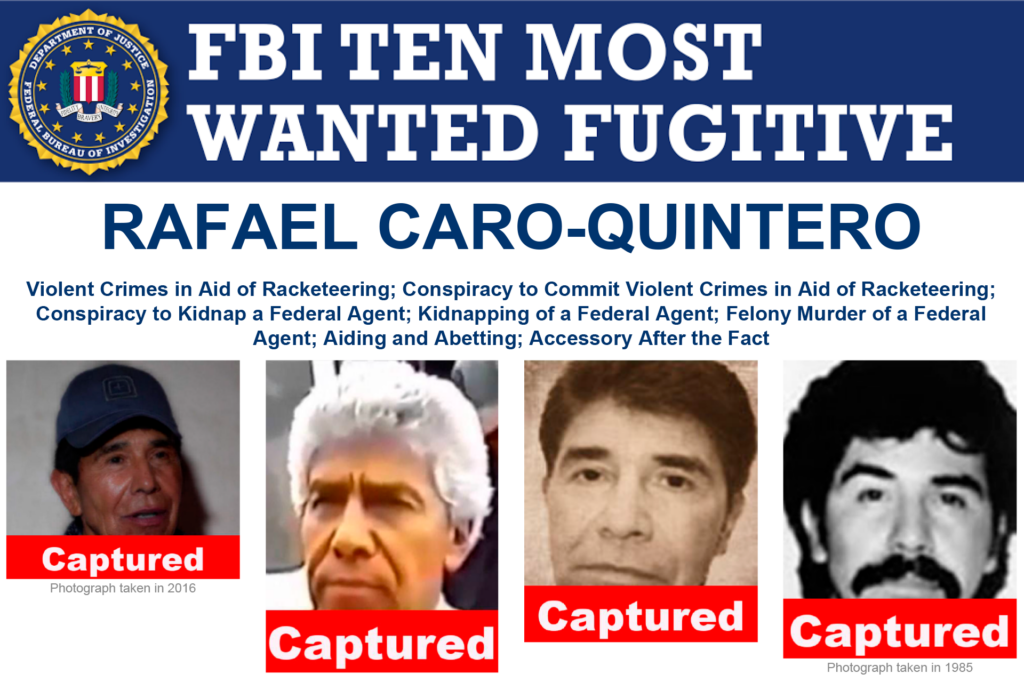
The Secretariat of the Navy, through the Mexican Navy ‒SEMAR‒, reported this Friday, July 15, that after an operation carried out by the Attorney General's Office of the Republic ‒FGR‒ in coordination with naval personnel, the arrest of drug trafficker Rafael Caro Quintero, one of the most wanted by the United States, was achieved.
Mexican authorities said the action was the result of field and office work carried out since his release in 2013, which led to the location of the drug lord in the municipality of San Simón -Choix-, Sinaloa, who was wanted by the Mexican government's security authorities, with two arrest warrants against him, as well as an extradition order to the United States.
Max, a canine from the Mexican Navy, was the hero in the story, as he was the one who found Caro Quintero in the bushes, the Mexican Navy said. in a press release.
It is worth noting that the United States Drug Enforcement Agency (DEA) recognizes the alleged drug trafficker as the leader of a criminal group in this country, and that since his disappearance, it has offered up to 20 million dollars for him.
Mexican authorities also reported that during operational activities carried out by this Institution, a Black Hawk helicopter of the Mexican Navy crashed in Los Mochis, Sinaloa, leaving at least 14 sailors dead, while another is receiving medical attention.
Likewise, the corresponding investigations will be carried out to determine the causes that could have caused the accident of said aircraft, which, they said, is not known if it was related to the arrest of the alleged drug trafficker.
For its part, the FGR detailed that, in compliance with the provisional detention order for extradition purposes, issued by a federal judge in response to the request made by the Federal Public Prosecutor's Office - MPF - and with the presence of the Federal Ministerial Police - INTERPOL Unit -, Caro Quintero was admitted to the Social Readaptation Center Number 1 - Altiplano - in Almoloya, State of Mexico.
In this regard, he pointed out that once he was admitted, the judge in charge of the case was immediately notified of the execution of the aforementioned detention order so that said judicial authority could set a date and time for the corresponding hearing.
The response from U.S. officials was swift, with U.S. Attorney General Merrick B. Garland stating that "there is no hiding place for anyone who kidnaps, tortures and murders American law enforcement officers."
“We are deeply grateful to Mexican authorities for the capture and arrest of Rafael Caro-Quintero. Today’s arrest is the culmination of the tireless work of the DEA and its Mexican partners to bring Caro-Quintero to justice for his alleged crimes, including the torture and execution of DEA Special Agent Enrique “Kiki” Camarena,” the official said. in a press release.
Garland announced that he will seek his immediate extradition to the United States so that he can be tried by its authorities.
Garland said that the drug lord's immediate extradition to the United States will be sought "so that he can be tried for these crimes in the same justice system that Special Agent Camarena died defending."
Caro Quintero was one of the most wanted by the Drug Enforcement Administration (DEA) of the United States, along with the Mexicans Ismael "El Mayo" Zambada, linked to the Sinaloa Cartel, and Nemesio Oseguera Cervantes, alias "El Mencho" and leader of the Jalisco Nueva Generación Cartel.
It is worth noting that the detained drug lord was known as one of the most important drug traffickers in the 1980s, in addition to having been imprisoned in the middle of that decade in Costa Rica, due to the murder of DEA Agent Enrique Camarena Salazar, and his pilot Alfredo Avelar.
After having served only 28 years in prison for various charges, Rafael was released on August 9, 2013 by resolution of the first collegiate criminal court of the third circuit in Jalisco, on the grounds that he should not be prosecuted in the federal court for the murder of the agent.
Although a Mexican judge determined in 2009 that the drug lord deserved 199 years in prison, by law he was only given a maximum sentence of 40 years, but a few days later a judge issued a provisional arrest warrant against him for extradition to the United States and on November 6 of that same year the Supreme Court of Justice of the Nation revoked the court ruling that allowed him to leave prison in August.
Thus, his whereabouts have been unknown since 2013.
You may be interested in: Mexicans, Guatemalans and Hondurans among migrants killed in Texas

